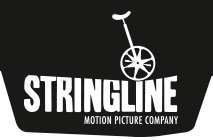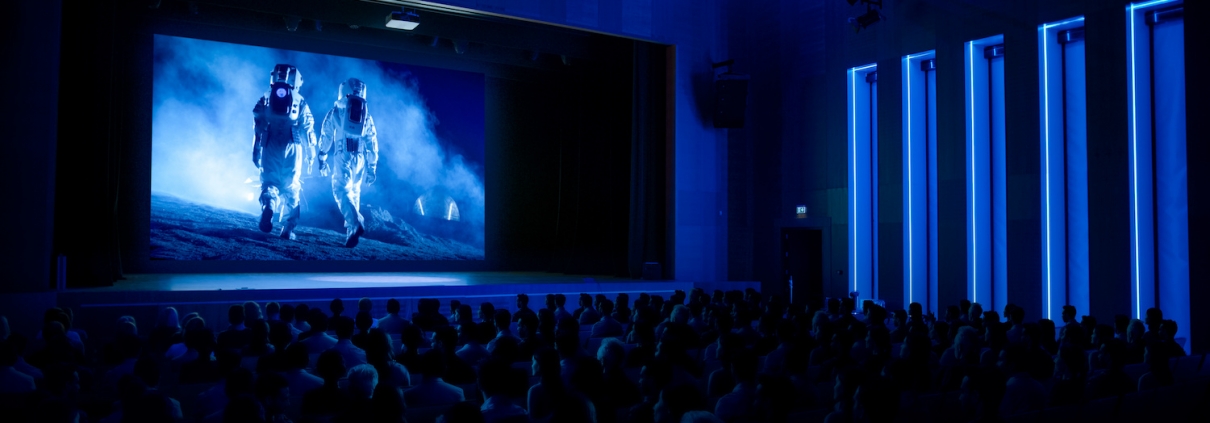A Brief (And Not-So Colorful) History Of Cinema [Timeline]
Movies bring people together. Whether you have a memory of watching “White Christmas” with your family every winter, or you can’t wait for the next Marvel film to be released in theaters, everyone has some attachment to cinema.
Whether you want to get started in the film industry or you’re just a movie buff on the side, it’s exciting to learn how film got its start. Let’s take a closer look at the history of cinema, from the first moving pictures and adding color to the birth of Hollywood and what we have today.
1872: Series Photography Is Born
Film was born out of two things that have inspired many great inventions over the years:
Boredom and curiosity.
A man named Leland Stanford was both bored and curious in 1872. He was a horse racing enthusiast who was convinced that a horse lifted all four hooves off the ground when galloping. Since horses move too fast to observe this with the human eye, Mr. Stanford hired a photographer named Eadweard Muybridge to photograph a horse mid-gallop.
It took a few years for Muybridge to perfect the technique of photographing the horse in motion, but eventually, he photographed the horse with a series of 12 cameras triggered in sequence.
Eadweard Muybridge became well-known for the invention of series photography which was an integral first step to creating motion pictures.

Image Source: https://upload.wikimedia.org/wikipedia/commons/d/d2/The_Horse_in_Motion_high_res.jpg
1893: Sneezes, Factories, and Movie Studios, Oh My!
Eventually, other inventors picked up what Muybridge was putting down. People like Thomas Edison, Auguste & Louis Lumiere, and Woodville Latham developed new ways to capture and project movement. Where Muybridge used bulky glass plates to capture images, a new process used strips of light-sensitive celluloid film.
This film allowed one camera to record multiple exposures, rather than multiple cameras taking photos in sequence as Muybridge did.
In 1893, Thomas Edison built the first movie studio (which would be pretty lackluster by today’s standards). One of the earliest films produced in this studio was a five-second clip of a man sneezing. ????
This sneeze “movie” could only be viewed through a kinetoscope, which was a machine that allowed one viewer at a time to look through a viewfinder and crank through the images. Shortly after, in 1895, motion picture projection was made possible by the cinematographe, invented by Auguste & Louis Lumiere in France.
The Lumieres succeeded in projecting a 46-second film called “Workers Leaving a Factory,” which consisted of… well, workers leaving a factory. It may sound boring now, but it was groundbreaking then.
1900-1930: Becoming a Global Sensation
Once there was a means to project moving pictures to multiple people at once, film took off. By the 1900s, it was a worldwide phenomenon. Artists and inventors from around the world were making their own strides and improvements to the medium.
1901: Color was introduced in film for the first time. Edward Raymond Turner and Frederick Marshall Lee used black and white film rolls but had green, blue, and red filters go over the camera as it shot. Eventually, in 1916, the technicolor technique was introduced. Learn more about how technicolor worked here.
1912: Believe it or not, but Los Angeles wasn’t always the film production center of the world. It started in New York and other East Coast cities. But by 1912, Los Angeles replaced New York as the center of the cinema business. One neighborhood, in particular, was most responsible for film production: Hollywood.
1927: This year, everything changed. The Warner Bros. studio (sound familiar?) was a family-owned film studio run by five brothers. It was a smaller studio than other larger companies like Universal and MGM. But, it’s thanks to Warner Bros. that cinema has sound. Sam Warner invested the company’s profits into the technology needed to record and reproduce sound. In October 1927, Warner Bros. released “The Jazz Singer,” which was the first film to ever include synchronized dialogue.

The 1930s-1960s: The Golden Age and The New Hollywood
Next came the Golden Age of Hollywood, where cinema was dominated by eight prominent production studios:
- Paramount Pictures
- MGM
- Fox
- Warner Bros.
- RKO Pictures
- Universal Pictures
- Columbia Pictures
- United Artists
During the Golden Age, filmmakers and actors began to get internationally famous. (It took many years for fair contracts and pay to be introduced for actors. And to be honest, the industry is still working on it.)
And then, the Golden Age came to an end thanks to a few major occurrences:
- Olivia de Havilland (you may know her from “Gone With the Wind”) sued Warner Bros. for adding six months to her contract, and she was the first to win a case like this.
- The eight major film studios effectively monopolized the industry by owning all of the theater chains in the country, and the U.S. government filed an anti-trust case against the major studios in 1948. The Paramount Decision required the studios to sell off their theater chains and allow independent theaters to screen what paying audiences wanted to see.
- The television set became widespread during World War II, which meant people had fewer reasons to leave the house and go to the movies. And even though film still grew during The Great Depression, it was clearly an economically trying time. Eventually, studios realized there was money to be made by leasing their film libraries to television producers, but it still marked the end of an era.
After the Golden Age, the next decade in film was known as The New Hollywood. This era saw timeless hits like “Singin in the Rain,” “Ben Hur,” and “Bonnie and Clyde.”
The 1970s- The Early 2000s: The Rise of the “Blockbuster”
The New Hollywood emphasized the authority of the director and the star instead of the producer. The studios allowed the directors they hired to take creative risks. Sometimes, these risks paid off so well that they leveled up previous understandings of performance, editing, cinematography, and even distribution models. And often, these successful risks would break box office records left and right.
When films were so unbelievably successful, they were coined as “blockbusters.” You may be familiar with some early blockbusters:
- The Exorcist
- The Godfather
- One Flew Over the Cuckoo’s Nest
- Grease
- JAWS
- Star Wars

The 2000s to Today: Global Entertainment & Independent Film
The concept of a blockbuster set the Hollywood studio system ablaze. Investors came and went as tons of people tried to make as much money off the film industry as possible. In 1983, 90% of American media was controlled by more than 50 companies. Now, all media is controlled by the same 5 companies. ????
Corporate Hollywood has continued to curate cinema for a global audience in order to make as much money as possible.
Prolific director Martin Scorsese once said in a New York Times article:
“The situation, sadly, is that we now have two separate fields: There’s worldwide audiovisual entertainment, and then there’s cinema. They still overlap from time to time, but that’s becoming increasingly rare.”
Films that are created for the purpose of making money still have immense artistry and talent behind them, but there is a whole other side to modern film that’s quietly keeping the industry afloat: independent film.
Independent film is still alive and well thanks to independent film festivals like:
- Sundance
- The Toronto International Film Festival
- Cannes
- And hundreds of other regional and local festivals worldwide
Whether you catch the latest blockbuster at the theater, watch your friend’s indie short film at a local festival, or check out a new title on Netflix, you can thank Leland Stanford for being curious and bored.
Want to Try Your Hand at Film? Call Our Crew
At Stringline Pictures, we take pride in creating independent film and video projects that range from corporate training videos and commercials to full-length feature films. If you have an idea that you want to bring to life, we have the capabilities to handle all things pre-production, principal photography, and post-production.
Contact us today to share your ideas!



